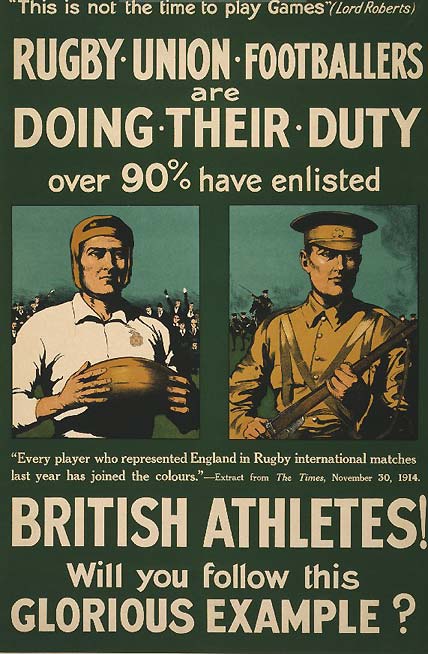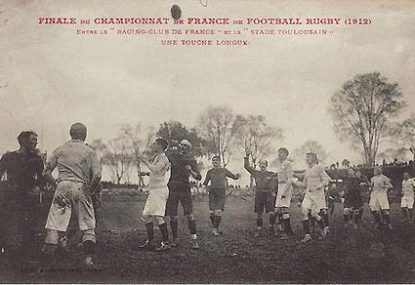“In some ways the game of rugby is like a bloodless battle.” This is a comment made by the retired Australian general and now board member of the ARU, Peter Cosgrave, to mark the annual Army-Navy rugby match played at Allianz Stadium last Saturday night.
The match, which was a curtain-raiser to the Waratahs – Rebels Super Rugby contest, was played in the glorious shadow of the coming Anzac Day. Before the big match the Ode of Remembrance was read out.
The poem’s final coda over-powered the emotions, as it always does: “We will remember them … Lest we forget.” A plangent Reveille was played and the rugby battle commenced.
And the match replicated in many ways, Peter Cosgrave’s analogy between rugby and war. “There are similarities,” he argues, “between the harsh and lethal demands of warfare and the thrill we get from a full-bodied contact sport like rugby. The thing about rugby is that it does prepare people to keep going under severe stress when things they have to do are extraordinarily hard.:
This notion of rugby as a war game is embedded in the history of the code.
Baron de Coubertin, the founder of the modern Olympics, saw the ethics and reality of rugby as a contact sport as the ideal preparation for French youth in what he he and the French political establishment in the 1890s considered to be the inevitable war against Prussia.
De Coubertin refereed the first final of the French national club championship in the early 1890s. He was instrumental, as well, in introducing rugby into the Olympic Games. When he retired from being the head of the IOC, rugby was then withdrawn from the Olympics schedule of sports. It is returning, in the Sevens Rugby format, in the 2016 Olympic Games.
The textbooks and manuals on how to play rugby which were published before the First World War invariably made reference to the ‘manly’ qualities that game espoused. The tactics and the terminology of the game, too, reflected this war game mentality.
Many of the metaphors of rugby are war metaphors. Halfbacks ‘snipe’ around the blindside. ‘Attacks are launched’. Fullbacks kick ‘torpedo’ punts and at other times boot ‘bombs’ into the night sky. There are ‘bullet’ passes…
But this analogy of rugby as a war game needs to placed in the context. Rugby is a game. It is a hard, body contact game that, as Peter Cosgrave says, “prizes hardship, teamwork, courage, initiative, stamina and a never-say-die attitude”. It is not war.
War is a terrible, killing machine. The rugby community knows the truth of this. And on this Anzac Day, as on past Days, the names and lives of fallen Wallabies in both World Wars are remembered and honoured.
I was out at the ARU headquarters earlier this week when I went into the archives room and met the archives manager Bronwyn Wood and a volunteer, George Franki. They printed out for me two booklets written in 201o by George Franki on the Australian Rugby Internationals who gave their lives in both World Wars.
The introduction to the booklet on World War I points out that 90 per cent of senior rugby union players in NSW and Queensland enlisted. Many clubs disbanded and interstate matches ceased. An estimate 60 Wallabies served in the armed forces.
Ten of these internationals gave their lives:
Blair Inskip Swannell – 25 April 1915
Edward Rennix Larkin – 25 April 1915
Harold Wesley George – 10 May 1915
Frederick Herbert Thompson – 29 May 1915
Arthur Verge – 8 September 1915
George Harold Pugh – 5 September 1916
Herbert Jones – 4 November 1916
Clarence Wallach MC – 22 April 1918
Bryan Desmond Hughes MC – 6 August 1918
William George Tasker – 9 August 1918
The stories of all these men are lovingly detailed. They are all poignant in their various ways.
Edward Larkin’s story, though, has resonances that are still heard to this day. Born in 1880, he was educated at St Joseph’s College, Sydney where he played for the famed First XV. He played in the first Test against New Zealand at the SCG in 1903, New Zealand’s first Test match.
In 1909 he became the secretary of NSW Rugby League. One of his major coups as secretary was to gain support for the new rugby code in 1913 from the Marist Brothers schools. In the same year he became the MLA for Willoughby, the first Labor seat won on the north side of the harbour.
He was killed in action on 25 April 1915, on the same day as Blair Swannell, in an advance from the 400 Plateau. He was later mentioned in despatches.
In World War II, at least 139 Wallabies served. Fourteen of the 15 players in the last Test against New Zealand on 13 August 1938, NZ 14 – Australia six, served during the War.
Six of this team lost their lives:
Michael Clifford – 9 October 1942
Edwin Sautelle Hayes – 12 January 1942
Eric Ebsworth Hutchinson – 27 January 1943
Winston Phillip James Ide – 12 September 1944
Russell Lindsay Frederick Kelly – 25 December 1943
Frederick Raymond Kerr – 23 April 1941
Clifford Walter Patrick Lang – 4 March 1942
Kenelm McKenzie Ramsay – 1 March 1942
A survivor of the two World Wars, as a combatant, William Thornton Watson, deserves a mention here (I am indebted to the research of Sean Fagan and Jottings on Rugby for most of the following details).
Watson, who fought at Gallipoli and the Western Front, was awarded an MC for his bravery at Foucaucourt on 27 August 1918. Watson worked his way forward through enemy machine gun fire and directed three batteries to eliminate the machine-gun posts.
In World War II he won a DSO on the Kokoda Track.
At the end of World War I a rugby tournament between teams from Australia, Canada, New Zealand, South Africa, the Royal Air Force and Great Britain played in London for the King’s Cup. New Zealand won the tournament, which some rugby historians have dubbed the ‘first Rugby World Cup tournament.’

But Australia, the Australian Imperial Force (AIF) side, defeated the New Zealanders 6 – 5.
This AIF side was captained by Lieutenant ‘Billy’ Watson, a tough, front row forward and strong leader of men.
In 1919 the AIF side returned to Australia and played several matches to revive rugby in NSW and Queensland. Their last match of their tour and as a team was on 2 August at the Sydney Sports Ground when they defeated Australia 22 – 6.
The AIF team played ‘tough and vigorous’ rugby with a guiding principle that the ball was meant to handled in a running style and never to be kicked.
The AIF way of playing rugby became the basis for the stylish Waratahs running game that made NSW famous around the world.
It was estimated that 5000 rugby players joined the AIF in World War I. More than 500 of these players lost their lives. Some hundreds more rugby players were killed in World War II.
Lest we forget.






























































































